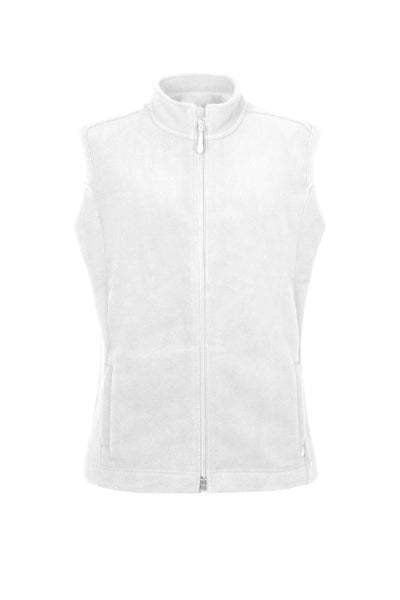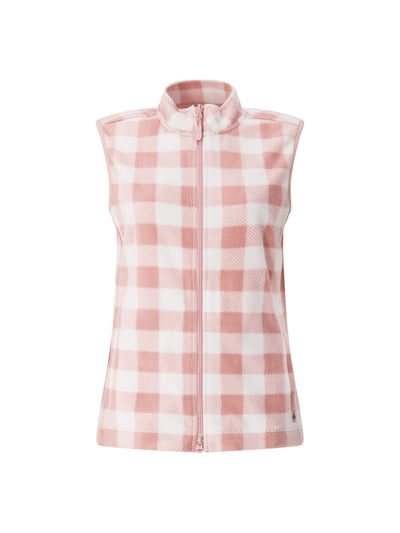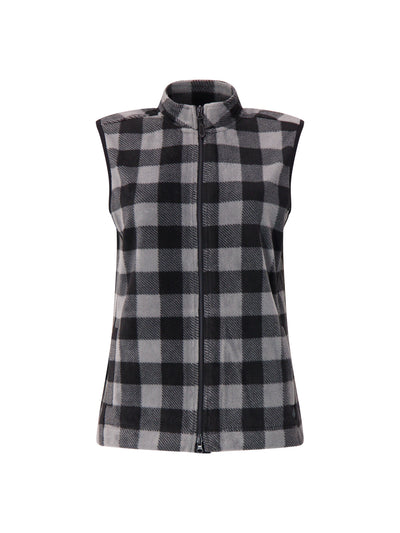The debate about the warmth provided by vests has been a longstanding one, particularly among outdoor enthusiasts and those living in colder climates. This article delves into various aspects of vests and their effectiveness in retaining body heat, exploring the science behind insulation and comparing vests to other types of clothing.
Understanding the Concept of Body Heat Retention
Body heat retention is a fundamental aspect of keeping warm, especially in cold weather conditions. When the body's temperature drops, it can lead to various health issues, including hypothermia. Understanding how clothing can influence body heat is crucial in determining which garments best suit cold environments.
The Role of Insulation in Clothing
Insulation is the key factor in any clothing designed for warmth. It works by trapping air and creating a barrier that reduces heat loss. Various materials serve as insulation, each providing varying degrees of effectiveness. Insulating layers in clothing trap warm air produced by our body without adding excessive bulk.
Common insulating materials include down feathers, synthetic fibers, wool, and fleece. Each has its unique properties, like moisture resistance or breathability, which influences its insulating capabilities further. For example, down is renowned for its exceptional warmth-to-weight ratio, making it a popular choice for jackets and sleeping bags, while synthetic fibers often excel in wet conditions, maintaining their insulating properties even when damp.
How Vests Contribute to Heat Retention
Vests offer a specific advantage when it comes to heat retention. By covering the core of the body, they allow for maximum mobility of the arms while effectively retaining heat around the torso area. This can be particularly beneficial for those who need to remain active in cold conditions.
Furthermore, vests can be worn over other layers, adding versatility to an outfit. For instance, one might wear a long-sleeved shirt beneath a vest for added warmth without feeling constricted by bulky sleeves. Additionally, many modern vests come equipped with features such as windproof fabrics and water-resistant coatings, enhancing their functionality in unpredictable weather. The strategic design of vests also allows for easy layering, making them an essential piece for outdoor enthusiasts who engage in activities like hiking, skiing, or cycling, where temperature regulation is vital for comfort and performance.
The Science Behind Vests and Warmth
Understanding the scientific principles governing warmth can offer insights into how vests perform in cold conditions. The combination of materials, design, and insulation all contribute to a vest's overall effectiveness.
ALT IMG TXT: Man Wearing Brown Winter Vest and Knit Hat
The Material Matters: Different Types of Vest Fabrics
Different fabrics yield varied results when it comes to warmth. For example:
-
Down: Lightweight and highly insulating, down is considered one of the best materials for warmth, but it loses its insulating properties when wet.
-
Synthetic Insulation: Materials like polyester provide warmth even when wet, making them a popular choice for active wearers.
-
Fleece: This fabric is both lightweight and breathable, allowing vapor to escape while still trapping heat.
Choosing the right material can ultimately influence not only warmth but also the comfort level when wearing the vest for extended periods. Additionally, the construction of these materials plays a significant role; for instance, the fill power of down insulation—measured by how much space one ounce of down occupies—can indicate its effectiveness in trapping air and retaining heat. Higher fill power translates to better insulation with less weight, making it an ideal choice for those who prioritize mobility without sacrificing warmth.
The Impact of Vest Design on Warmth
The design of a vest plays a crucial role in its ability to provide warmth. Key design features to consider include:
-
Length: Longer vests may offer additional coverage and warmth to the lower back and hips.
-
Closure Types: Zippers and buttons can affect how tightly the vest can be closed, creating a better seal against cold air.
-
Pockets: Strategic pocket placement can add functionality without compromising warmth.
Overall, the design of a vest not only impacts aesthetics but also functional warmth, making it essential to choose a vest that considers these elements. Furthermore, features such as adjustable hems and armholes can enhance fit and prevent cold drafts from entering. Some vests even incorporate windproof or water-resistant outer layers, which can significantly improve thermal efficiency by blocking out harsh elements. This thoughtful integration of design and technology ensures wearers can remain comfortable and warm, whether they are enjoying outdoor activities or navigating chilly urban environments.
Comparing Vests with Other Types of Clothing
When evaluating vests for warmth, it's worthwhile to compare them with other clothing types. Vests may serve unique purposes that differ from full-sleeve jackets or sweaters, providing insights on when to use them.
Vests vs. Full-Sleeve Jackets: A Comparative Analysis
Full-sleeve jackets often provide more coverage and can trap more heat due to their design. However, they may restrict movement, making them less ideal for activities that require a full range of motion.
In contrast, vests allow the arms to be free, making them a go-to option for hikers, cyclists, or anyone involved in physical activity during colder weather. The trade-off between warmth and mobility is a deciding factor for many individuals.
Moreover, the versatility of vests extends beyond just physical activities. They can be layered over long-sleeve shirts or under heavier jackets, adapting to varying temperatures throughout the day. This adaptability makes them a staple in transitional seasons, where fluctuating weather can catch you off guard. Additionally, many vests come equipped with pockets, providing practical storage for essentials like keys or snacks, enhancing their functionality compared to traditional jackets.

How Effective Are Vests Compared to Sweaters?
When comparing vests to sweaters, several factors come into play. Sweaters provide comprehensive coverage and warmth for both the upper body and arms. However, they may not offer the same level of breathability as vests during physical activities.
Conversely, vests can effectively maintain core warmth and allow more evaporative cooling, making them suitable for dynamic lifestyles. Ultimately, personal preferences and intended use cases will determine which garment is more effective.
Additionally, the fabric choices for both vests and sweaters can significantly impact their performance. For instance, wool sweaters are known for their insulating properties but can become cumbersome if they retain moisture. On the other hand, synthetic vests often feature moisture-wicking technology, making them ideal for high-energy activities. This distinction can influence not only comfort but also the overall effectiveness of the garment in various environments, from chilly mountain trails to brisk city streets.
Factors to Consider When Choosing a Vest for Warmth
Selecting the right vest isn’t solely about the type or brand but also involves a few essential factors that ensure you stay warm and comfortable.
The Importance of Fit and Size
A properly fitting vest is crucial in maximizing warmth. If it's too loose, cold air can enter, and if it's too tight, mobility is compromised. It's essential to find a balance that facilitates warmth without restricting motion, especially if participating in activities.
When shopping for a vest, pay close attention to sizing charts and possibly try on multiple sizes to ensure the best fit for your body type. Additionally, consider the vest's design features, such as adjustable hems or armholes, which can further enhance the fit. Some vests come with elastic or Velcro straps that allow for a more customized fit, ensuring the vest hugs your body without being constrictive. This attention to detail can make a significant difference in your overall comfort and warmth during outdoor activities.
Layering: A Key Strategy for Maximizing Warmth
Layering is a critical strategy when it comes to staying warm in colder weather. Vests work exceptionally well within a layering system. For instance:
-
Start with a thermal base layer.
-
Add an insulating vest for core warmth.
-
Top it off with a windproof outer layer if needed.
This approach not only traps warmth effectively but also allows for easy adjustments based on changing temperatures or activity levels. Moreover, the versatility of vests makes them ideal for various conditions; they can be worn alone on milder days or layered under heavier jackets when temperatures plummet. Fabrics like fleece or down provide excellent insulation, while materials like nylon or polyester can offer water resistance, making them suitable for unexpected weather changes. Understanding the materials used in your vest can help you make informed choices that enhance your overall layering strategy.
Debunking Common Myths About Vests and Warmth
As with many topics related to clothing and fashion, several myths about vests and their warmth capabilities exist. It’s vital to separate fact from fiction.
The Truth About Vests and Cold Weather
A common belief is that vests do not provide sufficient warmth for cold weather. While it’s true that they may not offer as much coverage as jackets, they are designed to retain heat where it matters most—around the torso. Many users report warm experiences even in colder climates when paired correctly with other garments. Layering a vest over a long-sleeve shirt or under a heavier coat can create an effective barrier against the chill, allowing for both mobility and comfort. Additionally, the materials used in many vests, such as down or synthetic insulation, are specifically chosen for their ability to trap heat without adding excessive bulk, making them an excellent choice for active individuals who need to stay warm while on the move.
Vests and Body Heat: Separating Fact from Fiction
Another myth is that vests allow too much body heat to escape due to their open design. However, the reality is that they strategically retain heat around the core while still facilitating breathability and freedom for movement. This design is particularly beneficial for outdoor enthusiasts who engage in activities like hiking or skiing, where maintaining core temperature is crucial while also needing to regulate sweat and moisture. Furthermore, many modern vests come equipped with features such as windproof fabrics and thermal linings that enhance their insulating properties, ensuring wearers remain comfortable even in brisk conditions.
By understanding these myths, users can make better-informed decisions when selecting their winter wear. Choosing the right vest can also depend on personal style and the specific activities planned; for instance, a sleek, fitted vest might be ideal for urban wear, while a bulkier, insulated option could be perfect for outdoor adventures. With the right knowledge, vests can be a versatile and stylish addition to any winter wardrobe, proving that they are more than just a fashion statement—they are a functional piece of clothing that can keep you warm and active during the colder months.
Heat Holders® Season-Spanning Warm Vests
Heat Holders ORIGINAL® Zip Vests are incredibly warm and incredibly versatile. With double zipper action and two inner and two outer pockets, these vests are both comfortable and practical. They can be worn as outer garments in the spring and fall and then as mid-layers in the extreme cold of winter. Check out the full jacket collection here. Happy shopping!













